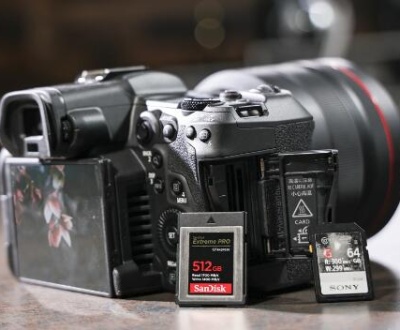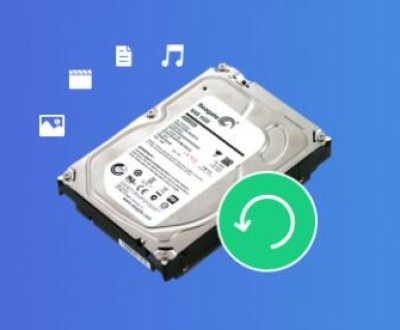Micro SD cards are popular storage solutions for smartphones, cameras, and other portable devices. However, data loss can occur due to accidental deletion, formatting, corruption, or hardware failure.
1. Micro SD Cards
Micro SD cards are small, removable storage devices that come in various capacities, ranging from a few megabytes to several terabytes. They utilize flash memory, which retains data even when the power is off. Understanding how they work will help you better navigate the recovery process.
1.1 Types of Micro SD Cards
Standard Micro SD: Basic version with capacities up to 2GB.
Micro SDHC (High Capacity): Ranges from 2GB to 32GB, suitable for most devices.
Micro SDXC (Extended Capacity): Offers capacities from 32GB to 2TB, ideal for high-definition video recording and large data storage.

2. Common Causes of Data Loss
Understanding the causes of data loss can help you take preventive measures and employ the right recovery techniques:
Accidental Deletion: Files may be deleted unintentionally.
Formatting: Formatting the card erases all data.
Corruption: Corruption can occur due to improper ejection, power failures, or malware.
Physical Damage: Damage from water, drops, or exposure to extreme temperatures can lead to data loss.
3. Initial Steps Before Recovery
Before attempting to recover data from your micro SD card, take the following initial steps:
3.1 Stop Using the Card
Immediately stop using the micro SD card to prevent overwriting any recoverable data. This is crucial, as new data can overwrite deleted files, making recovery difficult or impossible.
3.2 Inspect the Card
Check for any visible damage, such as cracks or bends. If the card is physically damaged, it may require professional recovery services.
4. Methods for Data Recovery
4.1 Using a Computer
4.1.1 Direct Connection
Insert the Card: Use a micro SD card adapter to insert the card into your computer’s card reader.
Access the Card: Open “This PC” or “My Computer” to locate the micro SD card.
Copy Files: If files are visible, simply drag and drop them to your computer.
4.1.2 Check for Hidden Files
Sometimes, files may be hidden due to corruption:
Enable Hidden Items: In Windows Explorer, go to the “View” tab and check “Hidden items.”
Look for Files: Search the card again for any previously hidden files.
4.2 Data Recovery Software
Panda Assistant supports a wide variety of file formats, including documents, photos, videos, and audio files. This versatility makes it suitable for diverse use cases, from recovering precious family photos to retrieving critical business documents. The software’s preview function is another standout feature, allowing users to view recoverable files before proceeding with the recovery process. This helps ensure that you only recover the files you need, making the process more efficient and tailored to your requirements.
User-Centric Design
Designed with the user in mind, Panda Assistant boasts an intuitive interface that guides you through each step of the recovery process. Even those who may not be technically inclined can navigate the software with ease. Comprehensive tutorials and support resources are also available to assist users in understanding the recovery steps, ensuring a smooth experience from start to finish.
Security and Integrity
Data integrity is a top priority for Panda Assistant. The software performs non-destructive recovery, meaning it does not alter the original data on the storage device during the recovery process. This approach minimizes the risk of further data loss, providing users with peace of mind that their files are safe throughout the recovery operation.
4.3 Command Prompt (Windows)
If you’re comfortable using command-line tools, you can attempt recovery via Command Prompt:
Open Command Prompt: Press Win + R, type cmd, and hit Enter.
Access the Card: Type chkdsk E: /f (replace E: with your card’s drive letter) and press Enter.
Repair Errors: This command will attempt to fix errors on the card.
5. Manual Recovery Techniques
If software solutions fail, you might consider manual techniques, though they are less reliable and typically only work in specific scenarios.
5.1 Hex Editor
Using a hex editor can help recover specific types of files by manually searching for file signatures. This method requires technical knowledge and is generally not recommended for casual users.
5.2 Professional Recovery Services
If all else fails, consider contacting a professional data recovery service. These services have specialized tools and expertise to recover data from severely damaged cards. However, they can be costly.
6. Preventive Measures
To avoid future data loss, implement the following strategies:
6.1 Regular Backups
Always keep backups of important files on multiple devices or cloud storage.
6.2 Safe Ejection
Always eject your micro SD card safely to avoid corruption. Use the “Safely Remove Hardware” option on Windows or the equivalent on other operating systems.
6.3 Use Quality Cards
Invest in high-quality micro SD cards from reputable brands to minimize the risk of failure.
6.4 Antivirus Software
Use reliable antivirus software to protect against malware that could corrupt your data.
About us and this blog
Panda Assistant is built on the latest data recovery algorithms, ensuring that no file is too damaged, too lost, or too corrupted to be recovered.
Request a free quote
We believe that data recovery shouldn’t be a daunting task. That’s why we’ve designed Panda Assistant to be as easy to use as it is powerful. With a few clicks, you can initiate a scan, preview recoverable files, and restore your data all within a matter of minutes.
Subscribe to our newsletter!
More from our blog
See all postsRecent Posts
- How to save tiktok videos on computer 2025-04-30
- How to watch gopro videos on computer 2025-04-30
- How to save video from blink video doorbell to computer? 2025-04-30

 Try lt Free
Try lt Free Recovery success rate of up to
Recovery success rate of up to









